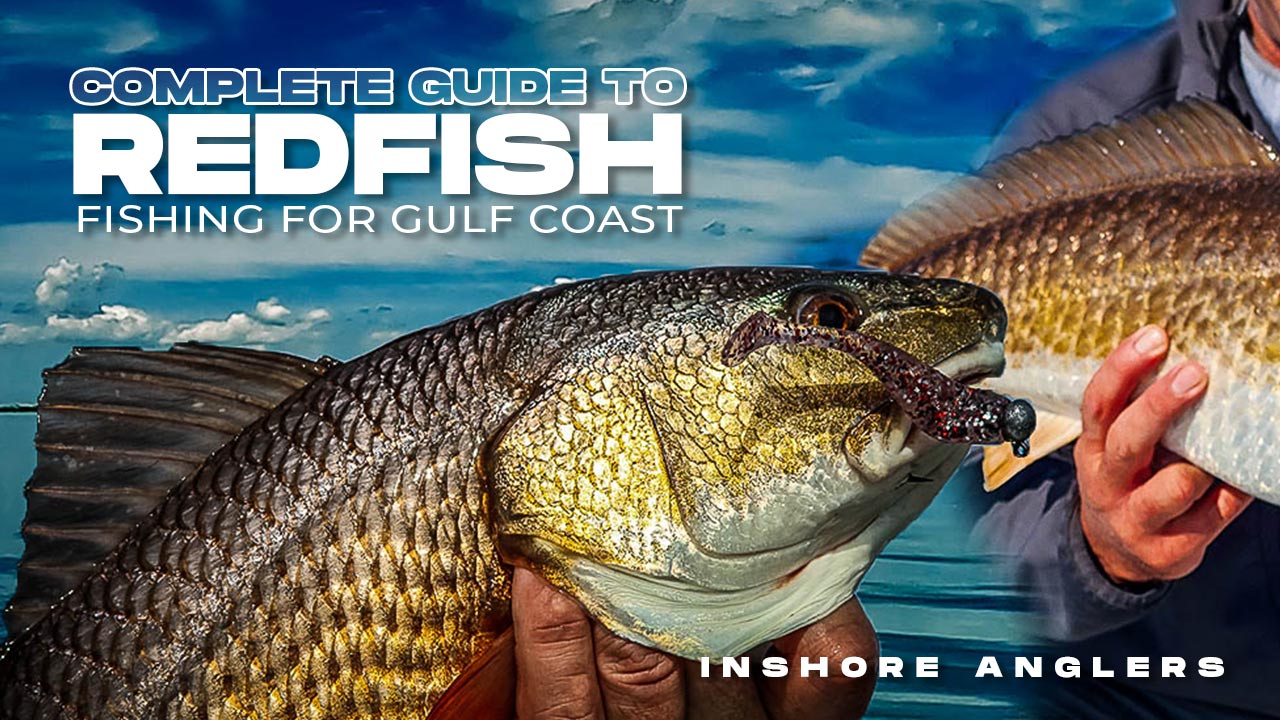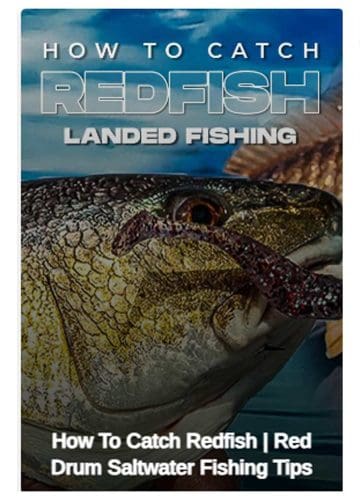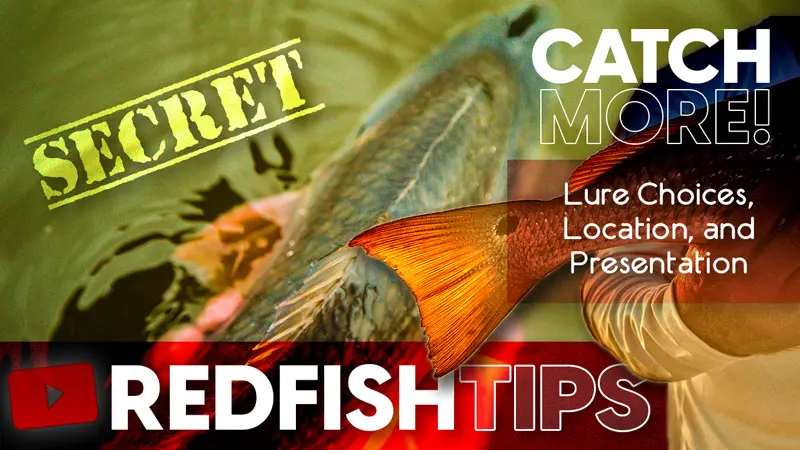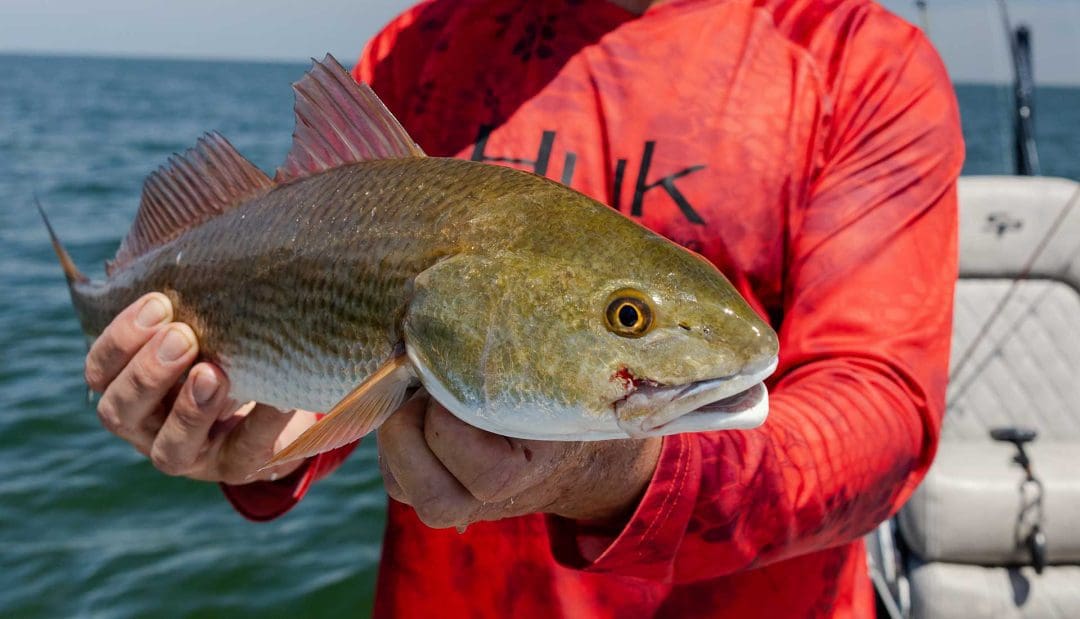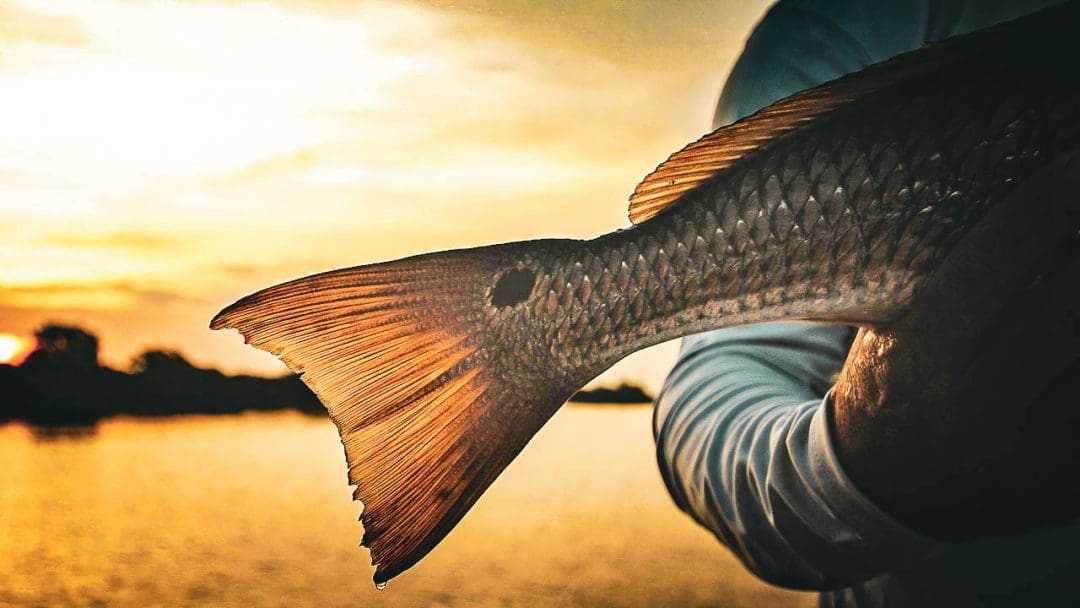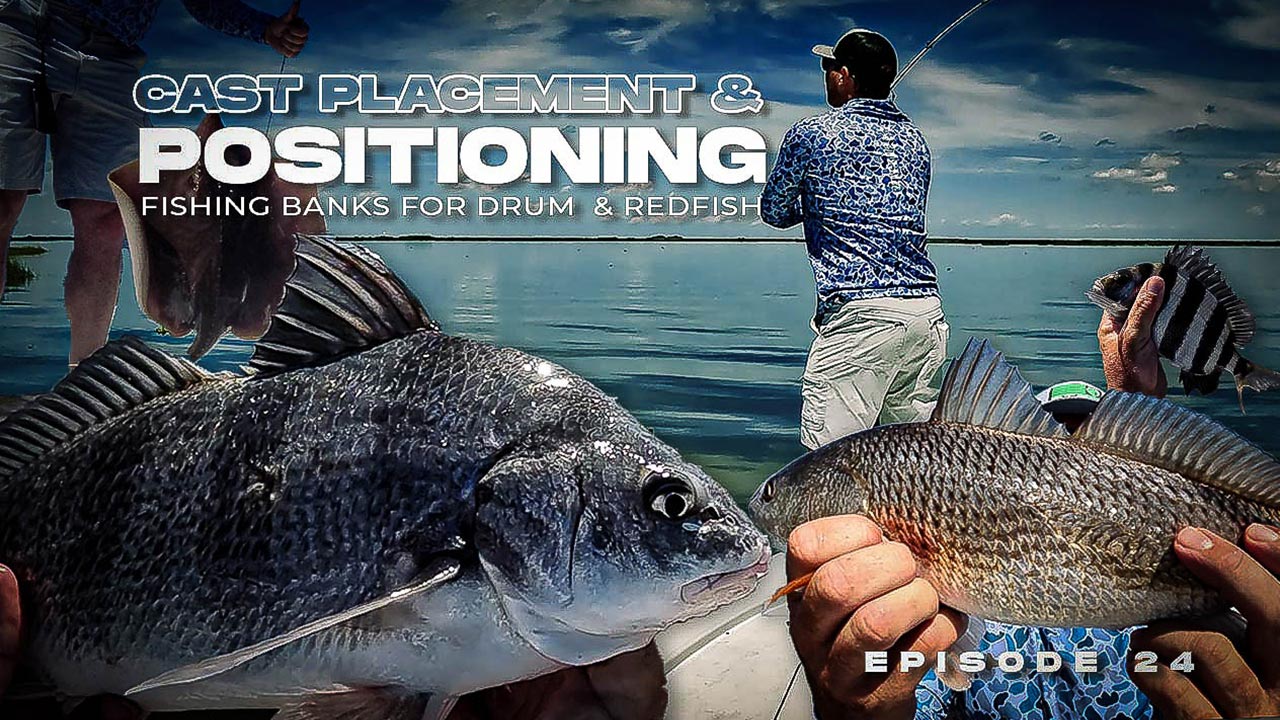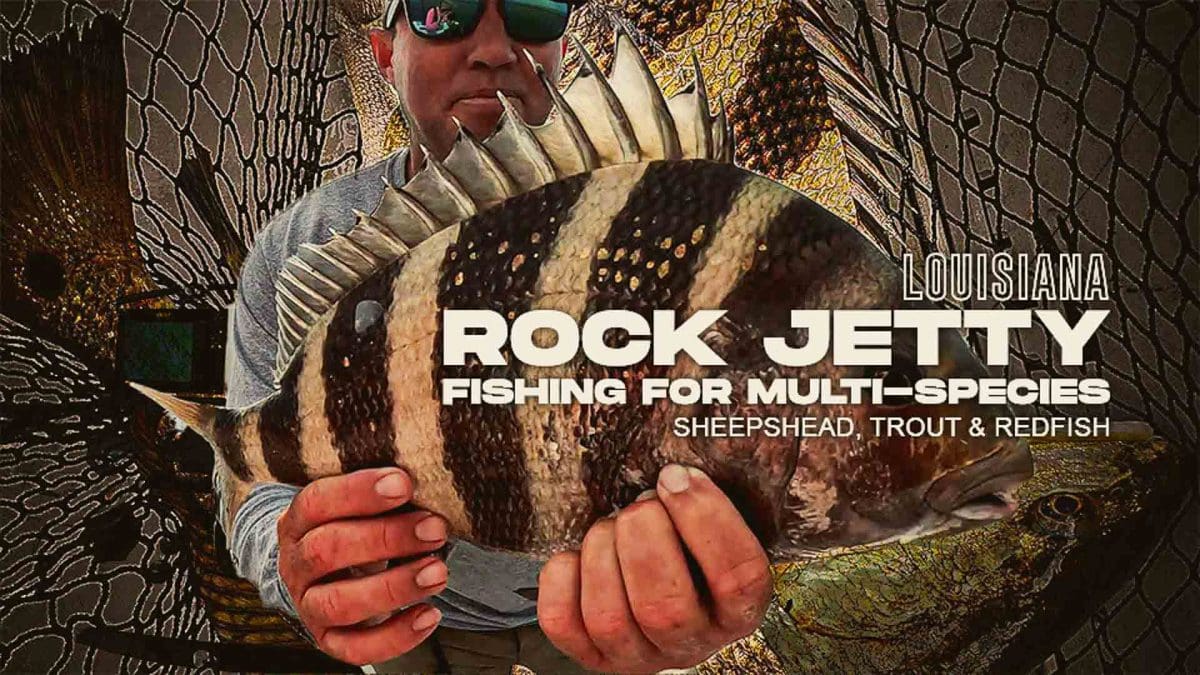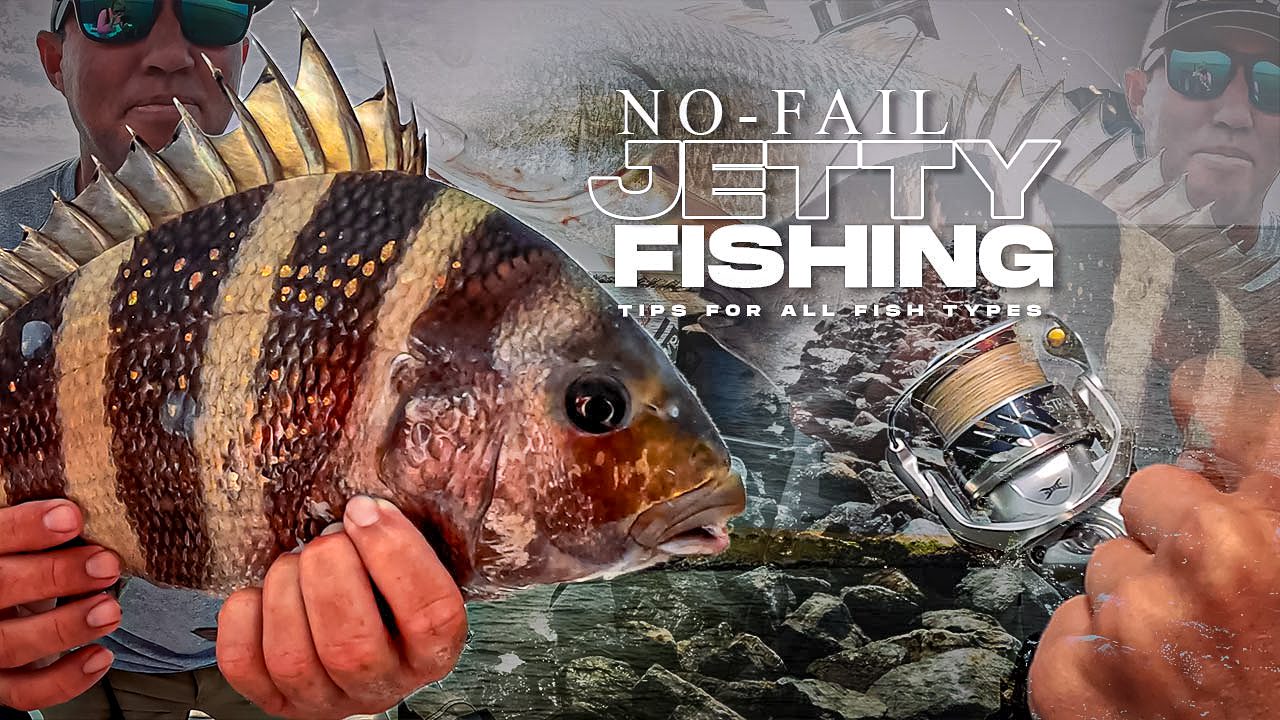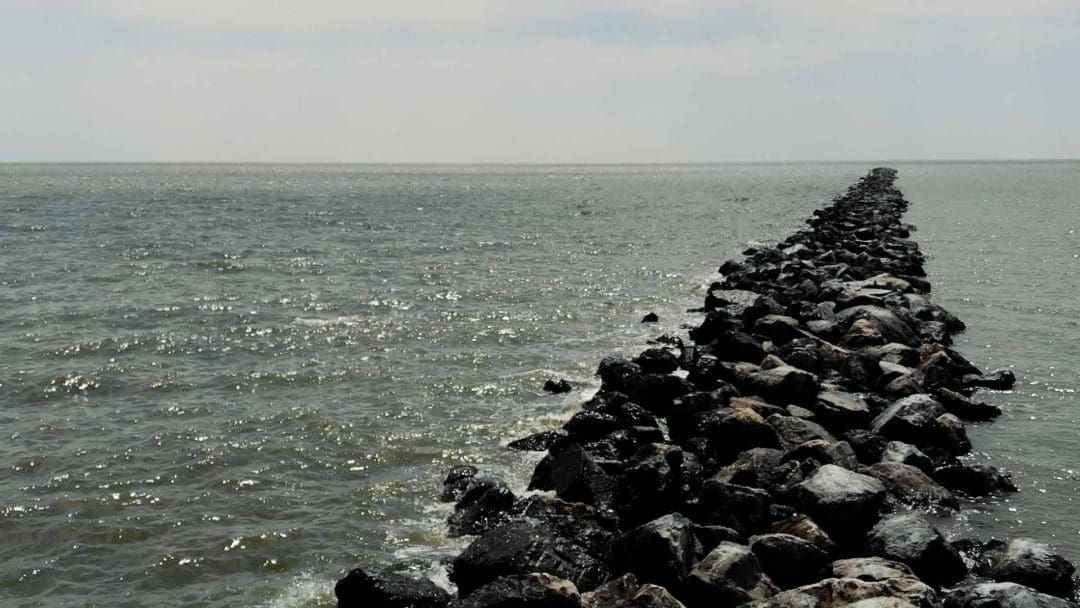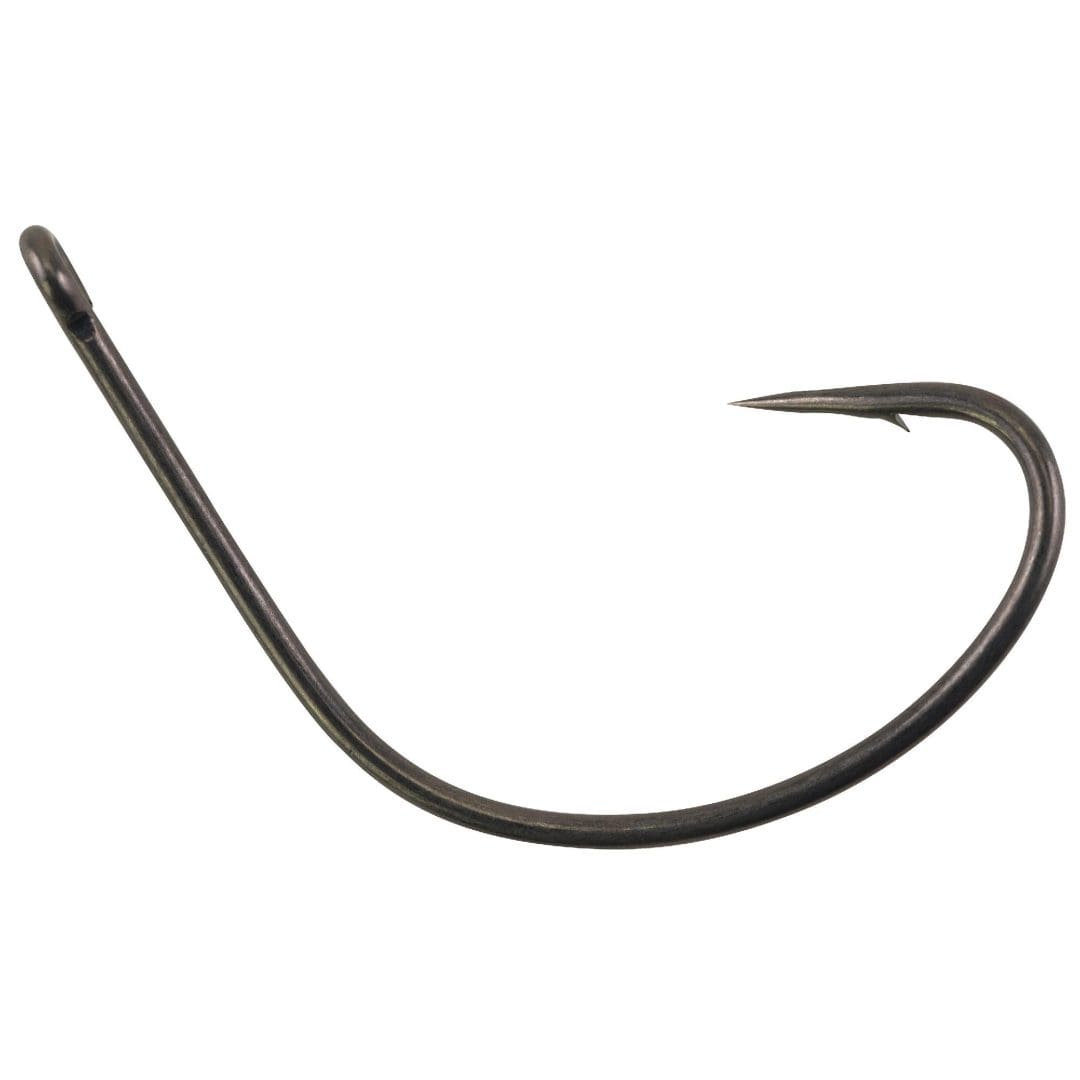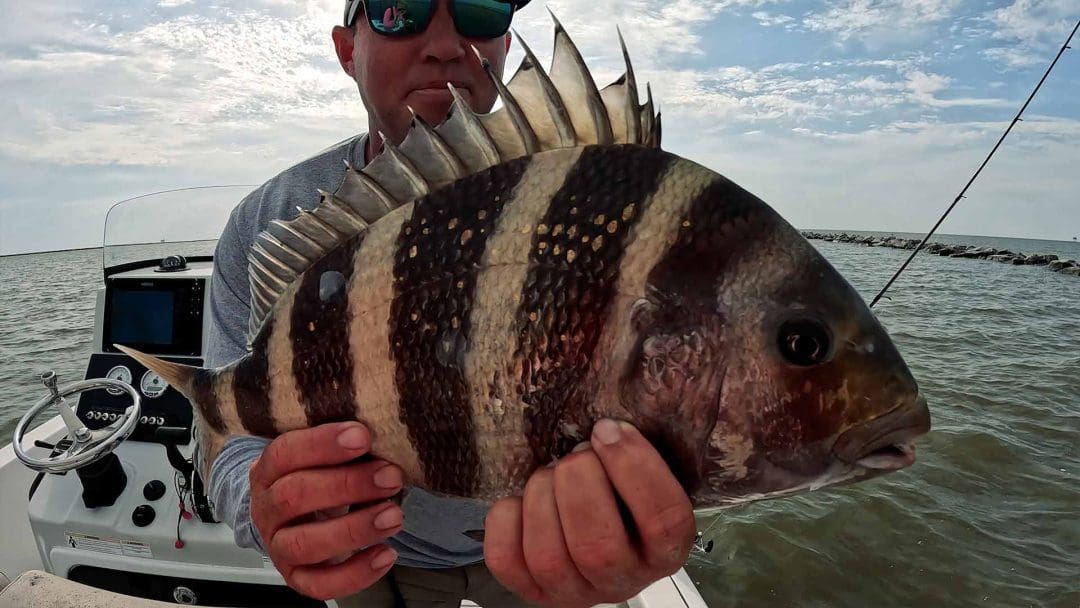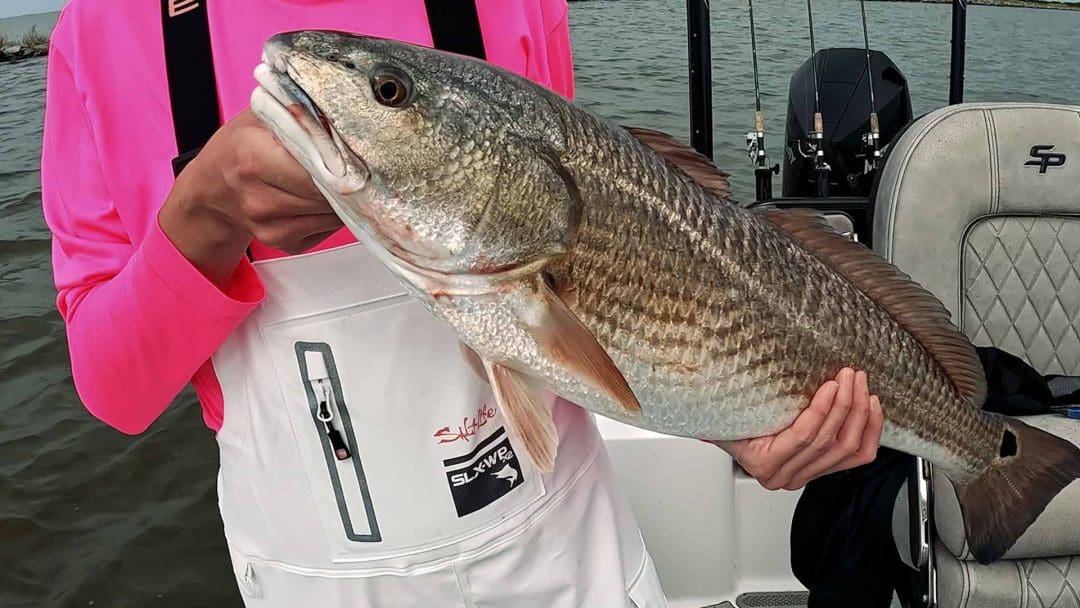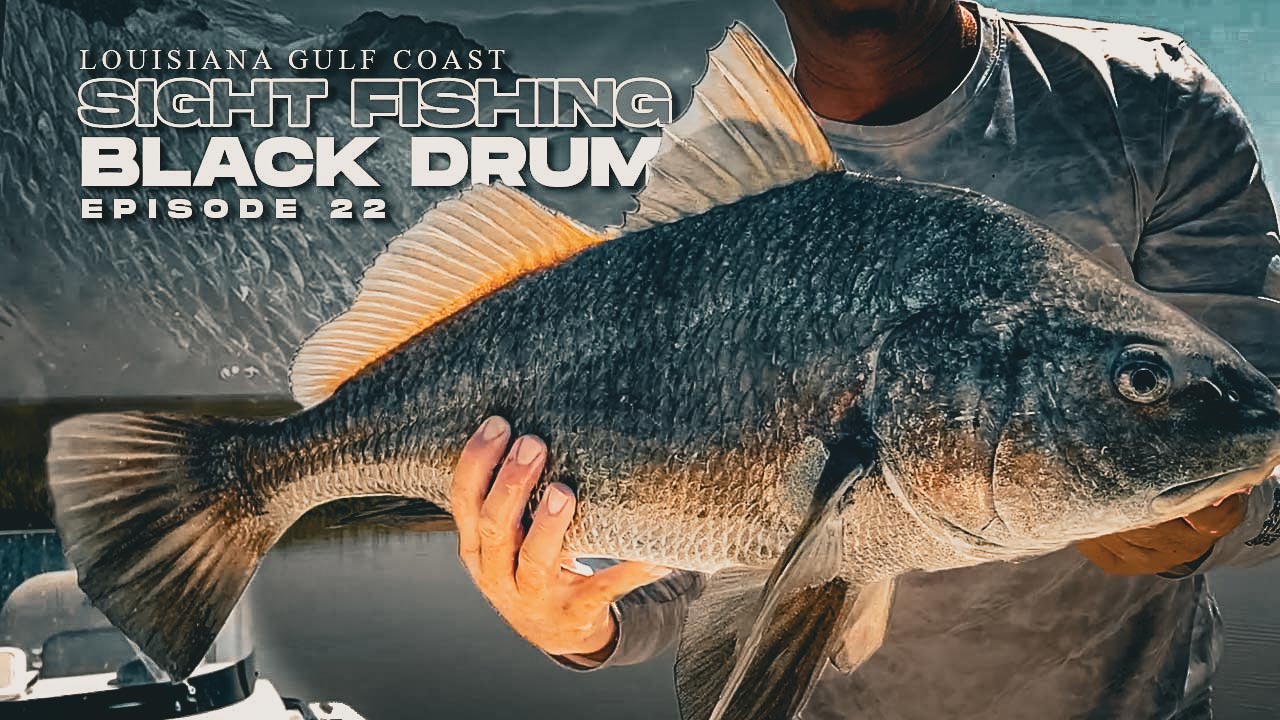Updated:
A Complete Guide for Catching Redfish (Red Drum) in the Gulf of Mexico
Redfish, also known as red drum, are among the most sought-after game fish in the Gulf of Mexico. Their allure isn’t just in their fight but in the versatility they offer to anglers, both novice and seasoned.
But what’s the secret to attracting these coppery bruisers? Let’s dive into the world of redfish and uncover the tactics that make for a successful catch.
Appropriate gear, such as medium-heavy rods and braided line. Learn professional tips on spotting and catching Redfish, the best times to fish for them, as well as factors like water temperature and tidal movements.
How to Catch Redfish
Catching redfish along the Gulf Coast, whether using live or artificial baits, often involves using a variety of effective techniques. Here’s a brief overview of some of the most common baits and methods:
Watch EP44: Catching Inshore Redfish
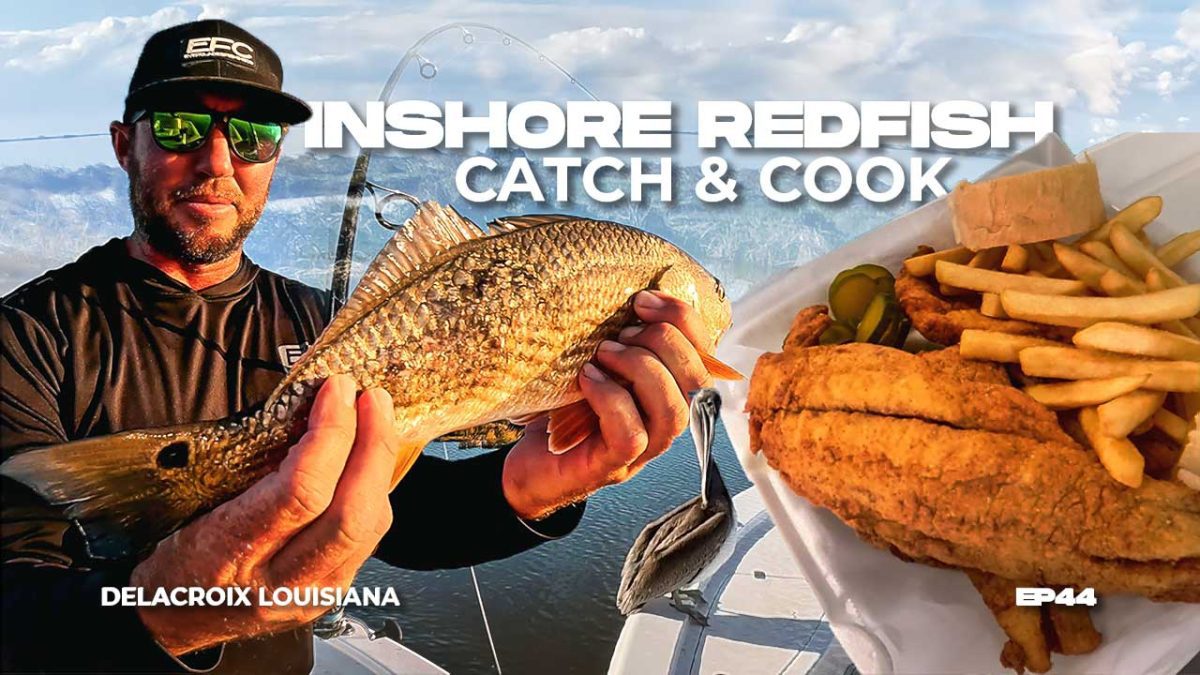
Catching Redfish differs depending on your location around the Gulf of Mexico.
Best Times for Catching Redfish
First up, timing is everything. If you’re looking to catch redfish, spring to fall is your window however Red Drum can be caught year round. As for when you should head out, the early birds and the sunset crowd get the best of the action (in the warmer months), so aim for those early mornings and late afternoons.
The opposite can be said during the cooler winter months, when your best time to catch redfish will actually be at the highest point of the midday sun, keep these in mind when deciding when you should head out for your best chances to catch redfish.
Louisiana Redfish Fishing
Louisiana is renowned for its red drum (Redfish) fishing, with the fish thriving in its coastal marshes, bayous, and shallow coastal waters.
The unique blend of freshwater and saltwater in this region creates an ideal habitat, making red drum a primary target for anglers.
Florida Redfish Fishing
Florida coast redfish inhabit a wide range of coastal environments, including the Atlantic Ocean, Gulf of Mexico, and various bays and lagoons.
While not as abundant as Louisiana, Florida’s saltwater fish diversity allows anglers to pursue Red Drum as well as other species like Grouper, Tarpon and Spotted Seatrout.
The Best Bait for Catching Redfish
Redfish aren’t too fussy with bait, but they do play favorites. Go natural over artificial for better odds, and remember, live bait rules—shrimp and crabs are top picks since they’re redfish fast food. If you’re into lures, pick soft plastics that look and move like these snacks, especially the scented kinds.
Don’t overlook mullet, live or chopped. Big redfish love them for their oily vibe in the water. Whether you’re in the shallows or deep, match your bait to the redfish’s dinner menu for the day, and you’ll up your game.
Best Live Baits for Catching Redfish:
- Shrimp: Live shrimp are a top choice for redfish. They are readily available and can be fished under a popping cork or free-lined.
- Mullet: Finger mullet or larger mullet are natural prey for redfish and can be fished on a Carolina rig or with a float.
- Crabs: Blue crabs or fiddler crabs, when available, can be excellent bait options, especially when targeting larger redfish.
- Pinfish: Pinfish are a common baitfish in the Gulf, and they can be effective when rigged on a hook or used as cut bait.
Best Lures for Catching Redfish
- Soft Plastic Swimbaits: Soft plastic swimbaits in various sizes and colors can mimic the appearance of baitfish and are often rigged on jig heads.
- Jig Heads: Jig heads are versatile and can be paired with various soft plastic baits. Choose a size and weight that matches the water depth and current.
- Spoons: Gold or silver spoons with a fluttering action can attract redfish by creating flash and vibration in the water.
- Topwater Lures: Topwater lures, such as poppers or walk-the-dog style baits, can be exciting when redfish are feeding aggressively near the surface.
Catching Fall Redfish with Dead Bait
Where to find Redfish
Shallow waters are where it’s at. We’re talking grassy spots, oyster beds, docks – these are the redfish’s hangouts. So, that’s where you should be casting your line.
Redfish Habitats
Redfish, also known as red drum, thrive in various habitats ranging from inshore flats to deep offshore waters.
They are most commonly found in estuaries, marshes, and shallow coastal waters where food is abundant.
Identifying these prime locations is crucial for successful redfish angling.
Fishing Gear for Redfish
To target redfish, a medium to medium-heavy spinning or baitcasting rod with a matching reel is ideal.
A 7- to 8-foot medium-heavy rod provides the perfect balance of sensitivity and power needed for these robust fish.
Spool your reel with 15-20 lb braided line for the best combination of strength and casting distance.
Best Live Baits and Lures for Redfish
The Redfish diet includes crustaceans, baitfish, and mollusks. Live bait such as shrimp, mullet, and crabs are highly effective.
When it comes to artificial lures, gold spoons, soft plastic jigs, and topwater plugs can be irresistible to redfish.
Tide and Time: Planning Your Redfish Trip
Tides play a significant role in redfish behavior. Fishing during moving tides, particularly incoming tides, can be incredibly productive as redfish actively feed during these periods.
Dawn and dusk are also prime times to target redfish, as they are most active during lower light conditions.
In addition to time of day, tides play a crucial role in redfish behavior. They tend to feed more aggressively during incoming tides, as the rising waters bring in small fish and crustaceans, offering ample feeding opportunities. Keeping an eye on the tide charts and aligning your fishing efforts with these natural cycles can make all the difference.
Best times to catch Redfish in the Gulf
When Are Redfish Most Active?
Redfish activity levels can vary throughout the day, influenced by tides, weather, and time of year. However, they are generally most active during the cooler parts of the day, such as early morning and late afternoon. During these times, redfish are more likely to be feeding, making them easier to target. Planning your fishing trips around these peak activity periods can significantly increase your chances of a successful outing.
Early Morning and Late Afternoon:
Redfish tend to be more active and feed more aggressively during the early morning and late afternoon when the water temperature is cooler and the light is lower.
This makes these times of day the best for targeting redfish in the Gulf of Mexico.
Incoming Tides:
Incoming tides can bring in fresh prey and nutrients, making them a good time for catching redfish in the Gulf of Mexico.
Look for areas where the tide is moving and cast your line near structures or areas where redfish are known to congregate.
High Tides:
High tides can provide more water for redfish to move into, particularly in shallow areas such as grass flats or marshes.
Look for areas where redfish are known to feed during high tides.
Overcast or Cloudy Days:
Overcast or cloudy days can provide better fishing conditions for redfish in the Gulf of Mexico, as they can be more comfortable and active in these conditions.
Look for areas where redfish are known to congregate.
Redfish Patterns, Tendencies and Behavior
Redfish are also more active during certain times of the day, particularly during the early morning and late afternoon (summer patterns) or mid-day (winter patterns).
Catching Redfish All Year Long
Catching Winter Redfish
During the winter months, redfish tend to move to deeper waters in the Gulf, where they can find warmer temperatures and a reliable food source. They may also seek out structures such as oil rigs or reefs where they can find shelter and food.
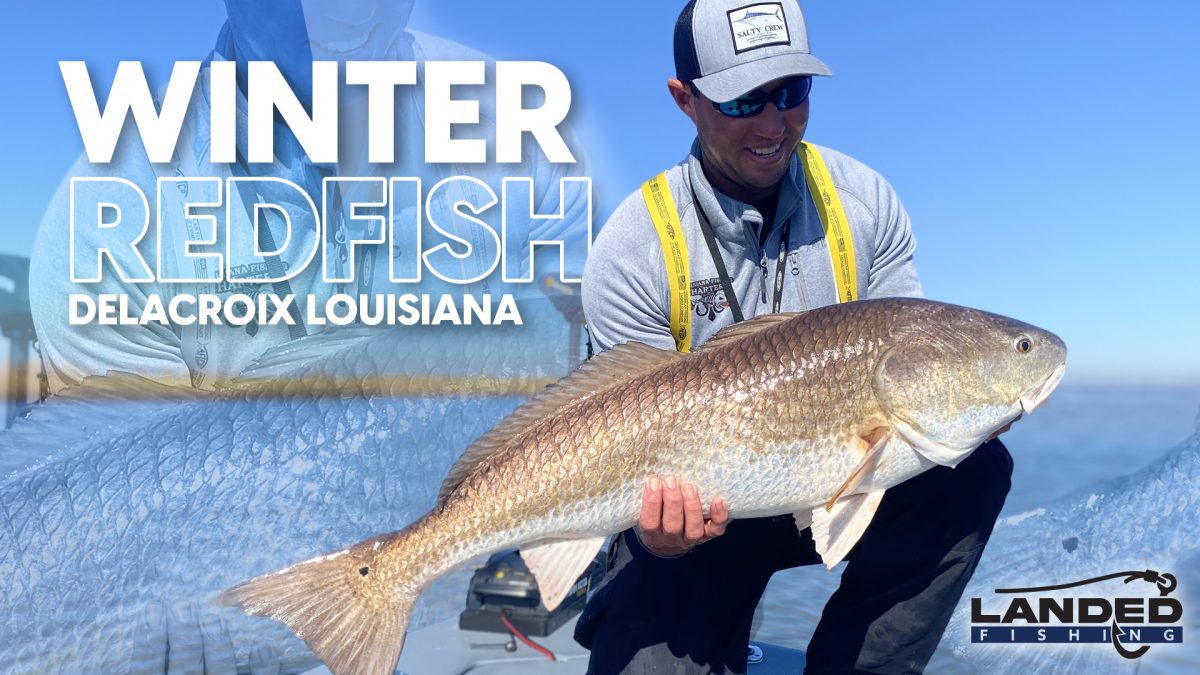
Catching Spring & Early Summer Redfish
In the spring and early summer, as the water temperatures warm up, redfish become more active and begin to move back into the shallower waters of the Gulf’s coastal inshore areas. During this time, Redfish are more likely to be found near grass flats, oyster reefs, and other structures where they can find food and cover.
Catching Fall Redfish
As summer turns to fall, redfish become even more active and are known to school up in large numbers. This makes them easier to target for anglers, as they are more likely to be concentrated in specific areas.
During this time, Redfish tend to feed aggressively in preparation for the colder winter months ahead.
Seasonal behavior of Redfish in the Gulf of Mexico can be key to becoming a successful angler. By targeting the right areas at the right times of year, you can increase your chances of catching these prized game fish.
How-to Spot Redfish
Spotting redfish in the Gulf of Mexico can be challenging but is an important skill for successful Red Drum fishing.
How to spot redfish and where to cast your line for the best results:
As for techniques, think ninja rather than bull in a china shop. Redfish are skittish, so stealth is your best strategy. Approach your fishing spots with care, and cast your bait close to those structures we talked about.
Look for signs of feeding:
One way to spot redfish is to look for signs of feeding, such as surface disturbances or birds diving into the water.
These can be indicators that redfish are feeding on baitfish below the surface.
Look for structures:
Redfish tend to congregate around structures such as oyster reefs, grass flats, and docks.
Look for these structures in the water.
Redfish Bag Limits by US State
| State | Bag Limit | Link to Fish and Wildlife Website |
|---|---|---|
| Alabama | 3 fish per person/day | https://www.outdooralabama.com/fishing/saltwater-fishing |
| Florida | 1 fish per person/day | https://myfwc.com/fishing/saltwater/recreational/red-drum/ |
| Georgia | 5 fish per person/day | https://gadnr.org/fishing-regulations |
| Louisiana | 5 fish per person/day | https://www.wlf.louisiana.gov/fishing/saltwater-rules-regulations |
| Mississippi | 3 fish per person/day | https://www.mdwfp.com/fishing-boating/saltwater-fishing/regulations/ |
| North Carolina | 1 fish per person/day | https://www.ncwildlife.org/Fishing/Laws-Safety/Saltwater-Fishing |
| South Carolina | 3 fish per person/day | https://www.dnr.sc.gov/lawsregs/saltwaterregs.html |
| Texas | 3 fish per person/day | https://tpwd.texas.gov/regulations/outdoor-annual/fishing/ |
| Virginia | 3 fish per person/day | https://www.mrc.virginia.gov/regulations/swrecfishingrules.shtm |

